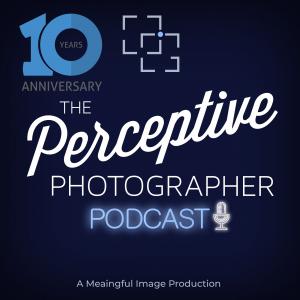The Perceptive Photographer

Choices Behind Minimalist and Simple Photography Part 2
Welcome back to another episode of the Perceptive Photographer podcast, as we continue our exploration of the distinctions between simplicity and minimalism in photography. If you missed the first part, I highly recommend catching up at some point with part one where I cover some of the more central differences between the two.
While simple compositions can be clean and balanced, minimalism takes it a step further by intentionally focusing on space, form, geometry, and shape. Every element in the frame should serve a purpose. When making an image ask yourself why each component is there and what it adds to the overall composition. Minimalism is about revealing the essence of your subject. Remove anything that doesn’t contribute to the viewer’s experience.
I like to think of it as a deconstruction of subject that is core to the final frame, which involves breaking down the environment to its most essential elements and only those elements. For example, in Hiroshi Sugimoto’s classic photograph, the horizon line is centered, and the image consists solely of sky and water, devoid of any distractions. By reducing elements, viewers focus on what truly matters in the frame.
Negative space is a cornerstone of minimalist photography. It creates a sense of openness and contemplation, allowing us to focus on the subject without the clutter of additional elements. Negative space is really about two things: isolating your subject, making it the focal point of the image and helping to define form and shape of the thing in the frame. . Negative space can evoke be an effective tool to evoke range of emotional responses, from calmness to loneliness. Be mindful of these nuances when composing your shots.It is also important to call out that successful minimalist photographers often exhibit a repetition of themes, forms, and processing styles, which helps convey their artistic vision. Elements like line, symmetry, and balance become more pronounced when distractions are removed.
Minimalism is often appreciated for its profound psychological impact when we look at the image. The emotional responses elicited by negative space and minimal content can vary widely, depending on the viewer’s interpretation.Both simple and minimalist photographs have their own merits, and neither is inherently better than the other. The key is to explore minimalism in your work and consider the intentional choices you make in your compositions. As you delve into this style, remember the importance of intention, the power of negative space, and the emotional impact your images can have.






 Visit Podcast Website
Visit Podcast Website RSS Podcast Feed
RSS Podcast Feed Subscribe
Subscribe
 Add to MyCast
Add to MyCast